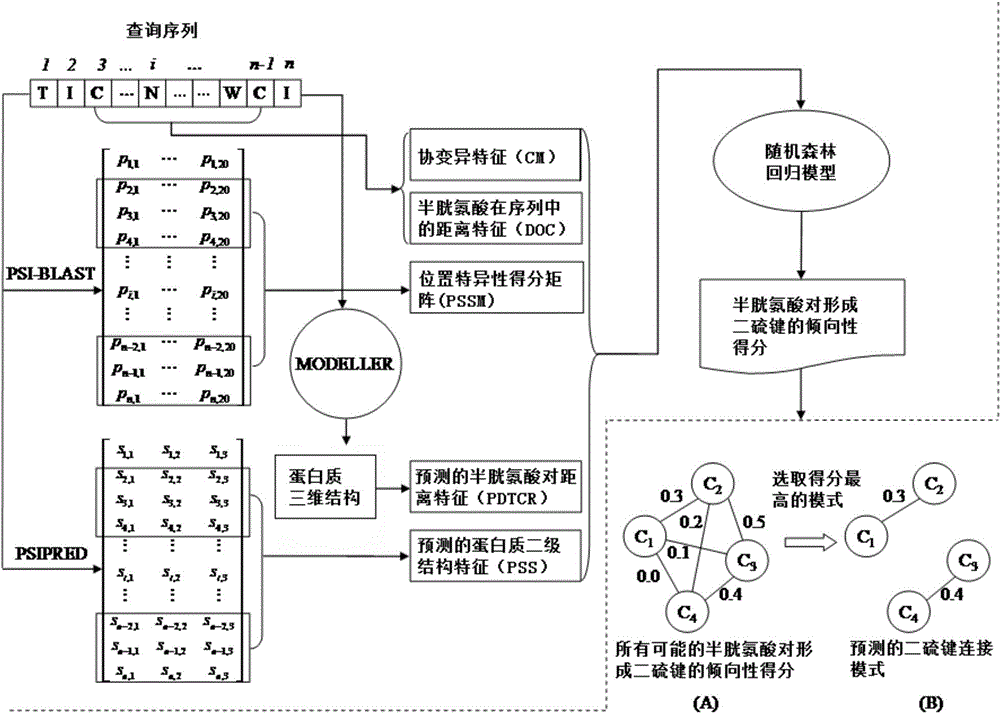Prediction method for protein sequence disulfide bond connection mode based on forest regression model
A protein sequence and connection mode technology, applied in the field of disulfide bond prediction in protein sequences in bioinformatics, to achieve the effect of improving prediction accuracy, improving prediction accuracy, and increasing prediction speed
- Summary
- Abstract
- Description
- Claims
- Application Information
AI Technical Summary
Problems solved by technology
Method used
Image
Examples
Embodiment Construction
[0027] In order to better understand the technical content of the present invention, specific embodiments are given together with the attached drawings for description as follows.
[0028] like figure 1 As shown, according to a preferred embodiment of the present invention, a method for predicting the disulfide bond connection pattern of a protein sequence based on the regression forest model, its implementation includes the following steps:
[0029] Step 1, feature extraction, based on the input protein sequence information, perform multi-view feature extraction and feature combination, namely:
[0030] Use the PSI-BLAST algorithm to extract the evolutionary information of the protein sequence, use the PSIPRED algorithm to extract the secondary structure information of the protein sequence, and then use the sliding window and feature serial combination method to extract each cysteine from the aforementioned evolutionary information and secondary structure information. Mult...
PUM
 Login to View More
Login to View More Abstract
Description
Claims
Application Information
 Login to View More
Login to View More - R&D
- Intellectual Property
- Life Sciences
- Materials
- Tech Scout
- Unparalleled Data Quality
- Higher Quality Content
- 60% Fewer Hallucinations
Browse by: Latest US Patents, China's latest patents, Technical Efficacy Thesaurus, Application Domain, Technology Topic, Popular Technical Reports.
© 2025 PatSnap. All rights reserved.Legal|Privacy policy|Modern Slavery Act Transparency Statement|Sitemap|About US| Contact US: help@patsnap.com



